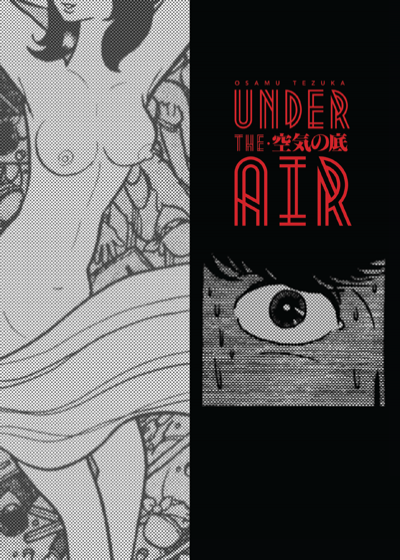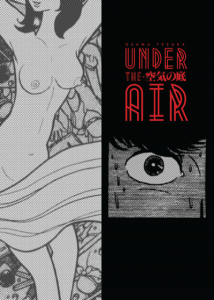By Osamu Tezuka. Released in Japan by Akita Shoten, serialized in the magazine Play Comic. Released in North America by Digital Manga Publishing. Translated by Grady Martin. Adapted by Nate Heneghan.
One of the difficulties in reading the so-called God of Manga is that there is a certain tendency to try to see everything as a masterwork. This can be quite difficult with Tezuka, who has written SO MUCH already. But just as there is good Tezuka, there is also bad Tezuka. And there is also Tezuka feeling things out, trying to grow and learn and make the manga industry grow and learn with him. Under the Air is one of those types. Created for the more mature Play Magazine, it’s a series of unrelated short stories – unrelated except for an interconnected theme of good and evil. As an experimental collection, it’s very hit-or-miss in terms of enjoyment. As a document of Tezuka, I found it far more interesting, and you can also see how it improves as it goes along – my favorite story was Under the Air itself, which is the final one in the volume.
Yes, as the cover art indicates, this is definitely one of Tezuka’s work for adults. There’s violence, murder, racism, death, sex, incest, and all sorts of human frailties along the way. The manga has a high bar to clear – because it’s meant to be about the nature of evil in many ways, its protagonists tend to be horrible people. Frequently his goal is to show them have some sort of revelatory experience that leads, if not to a change of heart, then at least to a changed state. At the start, this doesn’t work out so well – the star of Joe’s Visitor is SUCH a loathsome human being that there is absolutely no way I bought him returning at the end – in fact, I was initially baffled as to what was happening. A couple of the stories also “star” Tezuka as himself, usually looking for story ideas or visiting friends, and running into trouble. Tezuka, amusingly, does not portray himself in a very likeable way either, though he’s certainly more likeable than a lot of these people.
As the volume goes on, the stories get a bit more ‘fantastical’ in nature, ranging from hallucinatory images to experimental drugs to swapping your wife’s mind with that of a donkey – yes, really. You can also see Tezuka getting a handle on what he’s actually trying to do – the characters are not as “bwahaha, I am a BAD PERSON!” as they were at the start, and therefore the moral of whatever story he’s telling makes more sense and flows better. This culminates in the final story, featuring two innocents raised by themselves in a spaceship-style environment who grow up and become curious about the world outside their little bubble – which shows off the fact that good innocence can lead to just as many tragic consequence as evil heartlessness, though the story ends on a bittersweet rather than bitter note.
This volume came out via Digital Manga Publishing’s Kickstarter efforts, and there is theoretically a lot more coming in the near future. Under the Air is never going to be placed up there with the best mature Tezuka titles such as MW or Ode to Kirihito. But it’s an excellent example of seeing Tezuka experiment, sometimes fail, sometimes succeed, and push boundaries as far as he thinks he can take them.

